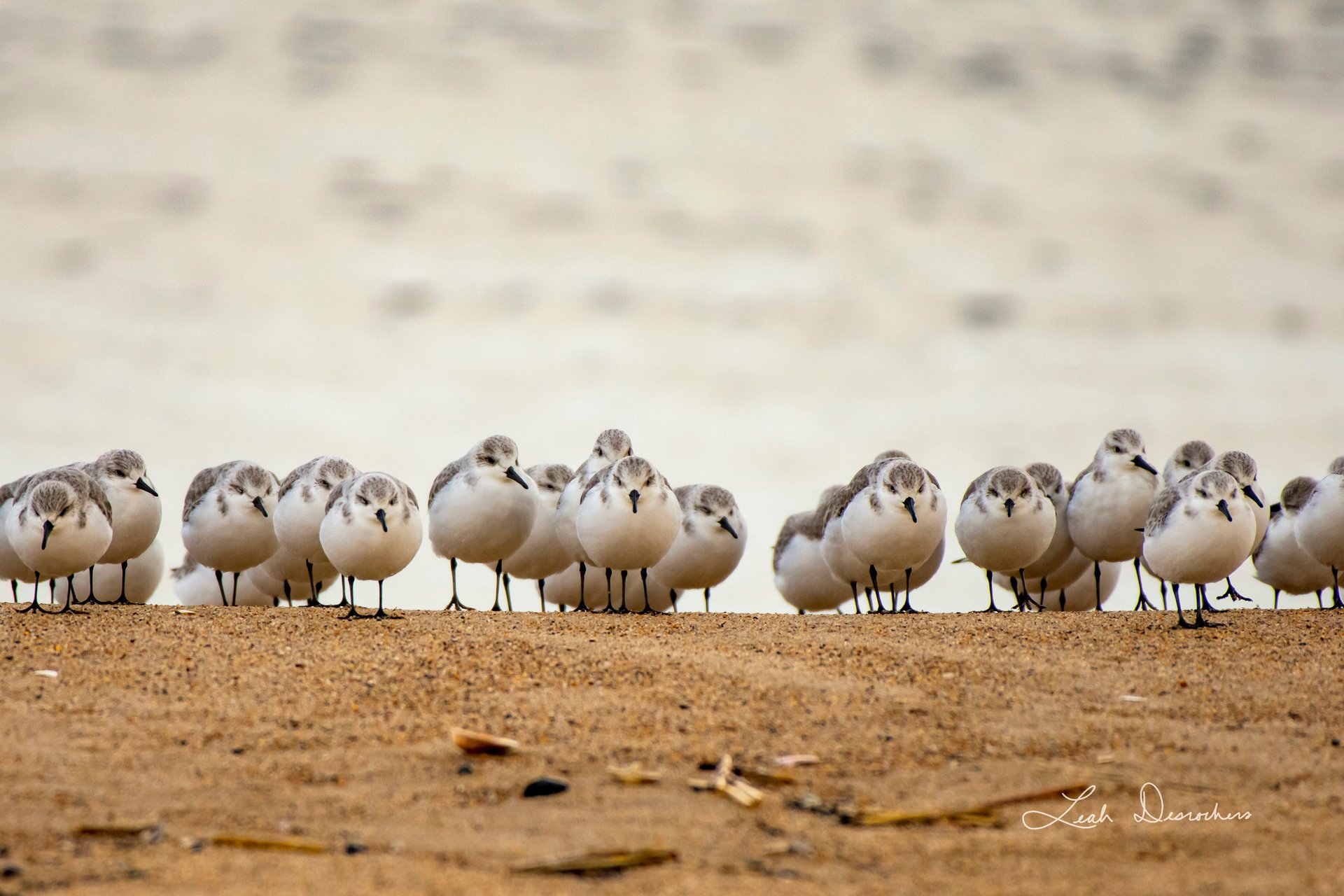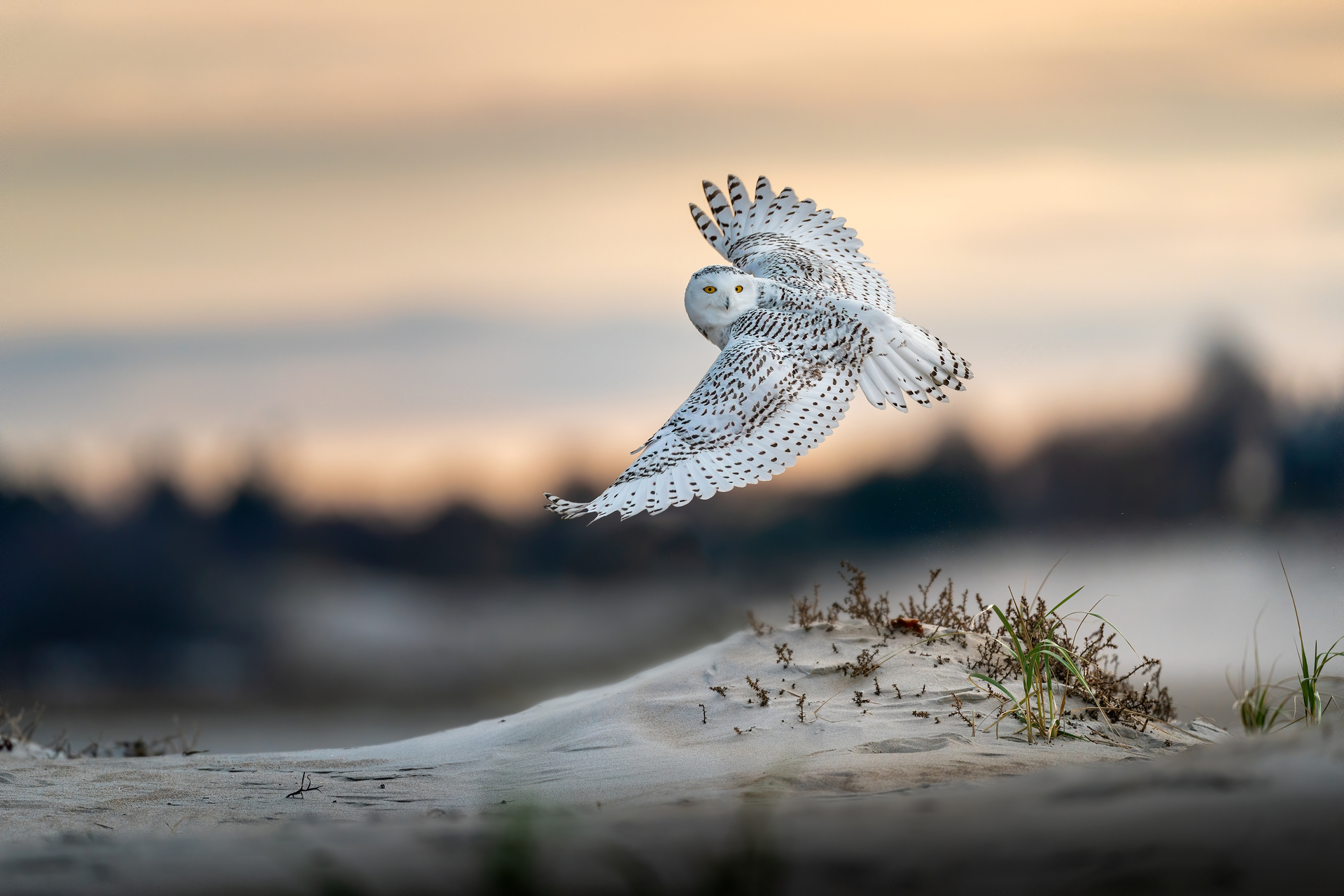Become a Better Bird Photographer
January 01, 2023
In the summer, photographers flock to the beaches to get pictures of newly hatched Piping Plover chicks or an Osprey finding its next meal. Come winter, photographers often go back to some of these same beaches to search for an elusive Snowy Owl quizzically peering out from a sandy dune. If you’re looking to get the perfect picture of one of these white-winged beauties, or any bird for that matter, keep the following tips in mind to get a great shot in the most responsible way.
Tip 1: Keep Your Distance
Smartphones have come a long way when it comes to photography, but their zoom still leaves much to be desired. If you find that you cannot get close enough to birds to capture decent images without disturbing them (for Snowies, that’s at least 50 yards away), then you may need to think about investing in a digital single-lens reflex (DSLR) with a longer lens, or a superzoom point-and-shoot.
Tip 2: Zoom within Reason
Now, just because you have a long lens doesn’t mean you should zoom in on just the bird. A great bird photo should also tell the viewer about its habitat. Imagine for example a single Ruddy Turnstone on a rocky beach framed by two boulders, a cluster of Snowy Egrets as the bright focal point in a panorama of monotone salt marsh, or a pair of owls peeking out from a sea of spruce branches. These are all images that would lose some visual appeal if the bird filled the entire frame.
Tip 3: Stay Out of Sight
You can always wait until the subject gets closer to you. For this technique, a blind and a little bit of patience can be a winning combination. A blind hides you and your equipment from a bird’s view, which allows them to act naturally. Not all blinds need to blend into the environment however—a (legally) parked car can sometimes make a great blind.
Tip 4: Forget the Flash
There’s nothing worse than having what could have been a great photo washed out from a flash. Or scattering the remaining birds scared by the bright light. These days, modern cameras can be set for low-light shutter speeds with high aperture to take advantage of the most available light—even as the sun is going down. Low-light photography also gives you an opportunity to experiment with intentional motion blur, light angle, and bird movement.
Tip 5: Composition
Create more compelling bird photography by mastering some of the many composition rules. The rule of thirds is the most well-known, and most digital cameras have a menu option to turn on a grid to help you compose a balanced photo. Other rules like balance, leading lines, depth of field, and point of view can also help improve your photography skills.
Tip 6: Respect the Birds
One of the best ways to know if you are stressing a bird is by studying up on bird behavior. Some birds have specific behavioral cues. Shorebirds may signal that you’re too close by lifting their wings straight up, indicating that they are about to fly. A threatened Killdeer will feign an injury to draw you away from its nest or young. Alert Snowy Owls often extend their neck upright and open their eyes wide. These actions are signs that you need to slowly back away and leave the bird alone.
Be especially cautious around nesting birds. Disturbing a nest can cause birds to sometimes permanently leave or abandon their chicks or eggs. For beach-nesting shorebirds, stay behind clearly roped-off areas, or stay clear of being in the direct path from a nest to the water, so chicks can wander toward the water to feed.
If you happen to see or find a secretive bird like a Long-eared Owl, don’t share its location with others. With too many curious people looking for species that are particularly sensitive to disturbance, chances are higher of accidentally destroying their natural habitat or scaring them away.
Tip 7: Follow the Law and Birding Code of Ethics
No wildlife photo is ever worth breaking the law for, especially if it relates to environmental or animal conservation. No matter how cool or rare a bird may be, stay off private property.
It’s not just about formal laws, however. There is a Code of Birding Ethics, originally established by the American Birding Association, that highlights how to enjoy birds in their natural habitat while at the same time being thoughtful and respectful.
Getting the Shot
To capture this stunning photo of a Snowy Owl taking off, photographer Van Lam planned ahead, stayed low to the ground, and kept his distance. He arrived two hours before sunset so he could take pictures during the “golden hour,” when the owl would be active, and the lighting would be perfect.
To avoid disturbing the owl, Lam kept a good distance away and stayed low to the ground whenever he moved. Once he settled in, he tried his best to remain still. His camera was all set to capture this flying shot with a 600 mm lens to zoom in on the bird. He also had some luck, because the owl flew in his direction to defend its territory from another owl.
Stay Connected
Don't miss a beat on all the ways you can get outdoors, celebrate nature, and get involved.




